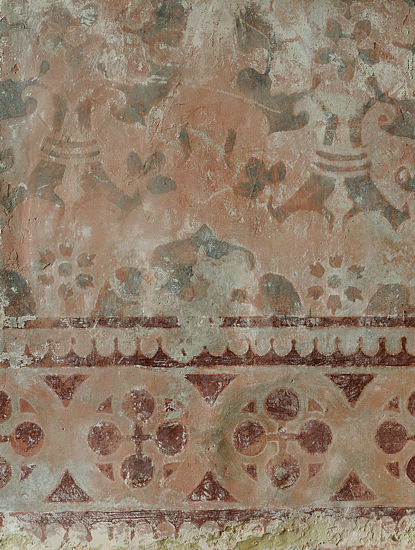Painted Backgrounds, Patterns, Inscriptions, Texts
Short Introduction & Links



Some painted patterns and backgrounds already appear incidentally on these pages, keeping company with subject paintings. These may be border patterns used to delineate separate scenes – spirals, foliage, leaves – as at South Leigh, or geometrical patterns, as at Peakirk. But patterns, often undoubtedly stencilled, sometimes appear for their own sake, simply to cover areas of bare plaster quickly and cheaply. The Middle Ages had no taste for bare walls, and the notion that the internal walls of old churches should be ‘authentically’ stripped of plaster back to the stonework would have baffled the medieval mind (it also meant much unwitting destruction of paintings on earlier, hidden, layers of plaster). But a quirk of human nature ensured that one of the most popular patterns (over a long period) was actually counterfeited stone/brickwork, sometimes straightforwardly illusionistic, as in the paintings of St Catherine and St Margaret at Old Weston, or an interesting combination of art and nature as in the ‘stoning and roses’ pattern at East Wellow, Martley and elsewhere.
Also popular and widespread were monograms, specifically the sacred IHS monogram to denote Christ, and the single M for the Virgin Mary. Both are often in elaborate decorative script and may be combined with other patterns. Much rarer are representational, but non-narrative subjects, including animals, some of which may have been copied from Bestiaries or the marginal illustrations in manuscripts. The very fine running stag from Martley is an example.
Photos: © Roy Reed 2017